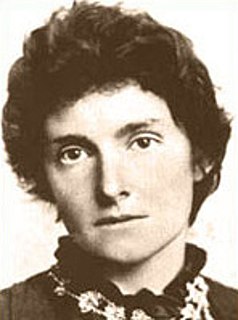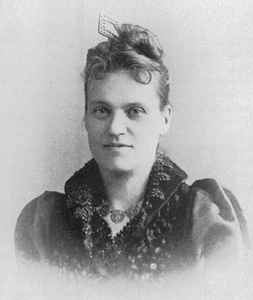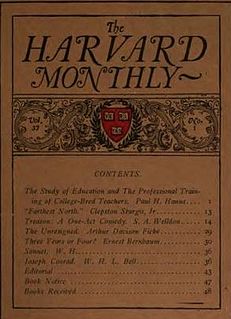Related Research Articles

If was an American science fiction magazine launched in March 1952 by Quinn Publications, owned by James L. Quinn.

Edith Nesbit was an English writer and poet, who published her books for children as E. Nesbit. She wrote or collaborated on more than 60 such books. She was also a political activist and co-founder of the Fabian Society, a socialist organisation later affiliated to the Labour Party.

The Observer is a British newspaper published on Sundays. In the same place on the political spectrum as its sister papers The Guardian and The Guardian Weekly, whose parent company Guardian Media Group Limited acquired it in 1993, it takes a social liberal or social democratic line on most issues. First published in 1791, it is the world's oldest Sunday newspaper.

William Edward Norris was a London-born English fiction and writer. His first story, Heap of Money, appeared in 1877, and was followed by a long series of novels and stories, many of which first appeared in the Temple Bar and Cornhill magazines.
Argosy, later titled The Argosy, Argosy All-Story Weekly and The New Golden Argosy, was an American pulp magazine from 1882 through 1978, published by Frank Munsey until its sale to Popular Publications in 1942. It is the first American pulp magazine. The magazine began as a children's weekly story–paper entitled The Golden Argosy. In the era before the Second World War, Argosy was regarded as one of the "Big Four" pulp magazines, the most prestigious publications in the pulp market, that many pulp magazine writers aspired to publish in. John Clute, discussing the American pulp magazines in the first two decades of the twentieth century, has described The Argosy and its companion The All-Story as "the most important pulps of their era."

All the Year Round was a Victorian periodical, being a British weekly literary magazine founded and owned by Charles Dickens, published between 1859 and 1895 throughout the United Kingdom. Edited by Dickens, it was the direct successor to his previous publication Household Words, abandoned due to differences with his former publisher.

The Strand Magazine was a monthly British magazine founded by George Newnes, composed of short fiction and general interest articles. It was published in the United Kingdom from January 1891 to March 1950, running to 711 issues, though the first issue was on sale well before Christmas 1890. Its immediate popularity is evidenced by an initial sale of nearly 300,000. Sales increased in the early months, before settling down to a circulation of almost 500,000 copies a month, which lasted well into the 1930s.
The Amalgamated Press (AP) was a British newspaper and magazine publishing company founded by journalist and entrepreneur Alfred Harmsworth (1865–1922) in 1901, gathering his many publishing ventures together under one banner. At one point the largest publishing company in the world, AP employed writers such as Arthur Mee, John Alexander Hammerton, Edwy Searles Brooks, and Charles Hamilton; and its subsidiary, the Educational Book Company, published The Harmsworth Self-Educator, The Children's Encyclopædia, and Harmsworth's Universal Encyclopaedia. The company's newspapers included the Daily Mail, the Daily Mirror, The Evening News, The Observer, and The Times. At its height, AP published over 70 magazines and operated three large printing works and paper mills in South London.

Cycling Weekly is a British cycling magazine. It is published by Future and is devoted to the sport and pastime of cycling. It used to be affectionately referred to by British club cyclists as "The Comic".

Catherine Louisa Pirkis was a British author of detective fiction. Throughout her career as a writer, Pirkis would sometimes write under the name of "C.L. Pirkis", as to avoid gender association.

Woman's Home Companion was an American monthly magazine, published from 1873 to 1957. It was highly successful, climbing to a circulation peak of more than four million during the 1930s and 1940s. The magazine, headquartered in Springfield, Ohio, was discontinued in 1957.

Black and White: A Weekly Illustrated Record and Review was a British Victorian-era illustrated weekly periodical founded in 1891 by Charles Norris Williamson. In 1912, it was incorporated with The Sphere.

Munsey's Weekly, later known as Munsey's Magazine, was a 36-page quarto American magazine founded by Frank A. Munsey in 1889 and edited by John Kendrick Bangs. Frank Munsey aimed to publish "a magazine of the people and for the people, with pictures and art and good cheer and human interest throughout". Soon after its inception, the magazine was selling 40,000 copies a week. In 1891, Munsey's Weekly adopted a monthly schedule and was renamed Munsey's Magazine.

Satellite Science Fiction was an American science-fiction magazine published from October 1956 to April 1959 by Leo Margulies' Renown Publications. Initially, Satellite was digest sized and ran a full-length novel in each issue with a handful of short stories accompanying it. The policy was intended to help it compete against paperbacks, which were taking a growing share of the market. Sam Merwin edited the first two issues; Margulies took over when Merwin left and then hired Frank Belknap Long for the February 1959 issue. That issue saw the format change to letter size, in the hope that the magazine would be more prominent on newsstands. The experiment was a failure and Margulies closed the magazine when the sales figures came in.

The Harvard Monthly was a literary magazine of Harvard University in Cambridge, Massachusetts, beginning October 1885 until suspending publication following the Spring 1917 issue.
Henry Dawson Lowry was an English journalist, short story writer, novelist and poet.
The Universal Magazine was a short-lived, London-based monthly magazine, which published non-fiction articles of general interest and some short fiction.

George Wylie Hutchinson (1852–1942) was a painter and leading illustrator in Britain and was from Great Village, Nova Scotia, Canada. He illustrated the works of Arthur Conan Doyle, Rudyard Kipling, Hall Caine, Robert Louis Stevenson and Israel Zangwill. His paintings inspired the poem "Large Bad Picture" and "Poem", both by Elizabeth Bishop, his great grand niece. Hutchinson was a contributor to and subject of the novel The Master (1895) by Israel Zangwill, with whom he was a close friend.
James Nicol Dunn was a Scottish journalist and newspaper editor, best known as the editor of London newspaper The Morning Post from 1897 to 1905 and as London editor of the Glasgow Evening News from 1914 unitl his death in 1919.
References
- ↑ "The Ludgate Monthly". Galactic Central. Retrieved 22 November 2019.
- ↑ "The Universal and Ludgate Magazine". The Bookseller: 104. 8 February 1901.
- 1 2 Culture : Ludgate Monthly, The : SFE : Science Fiction Encyclopedia
- ↑ May, Philip, WorldCat Identities
- ↑ "The Ludgate Monthly". The Athenæum (3313): 526. 25 April 1891.
- 1 2 "Dunn, James Nicol, (12 Oct. 1856–30 June 1919), London Editor Glasgow News since 1914". WHO'S WHO & WHO WAS WHO. 2007. doi:10.1093/ww/9780199540884.013.u195882 . Retrieved 11 November 2020.